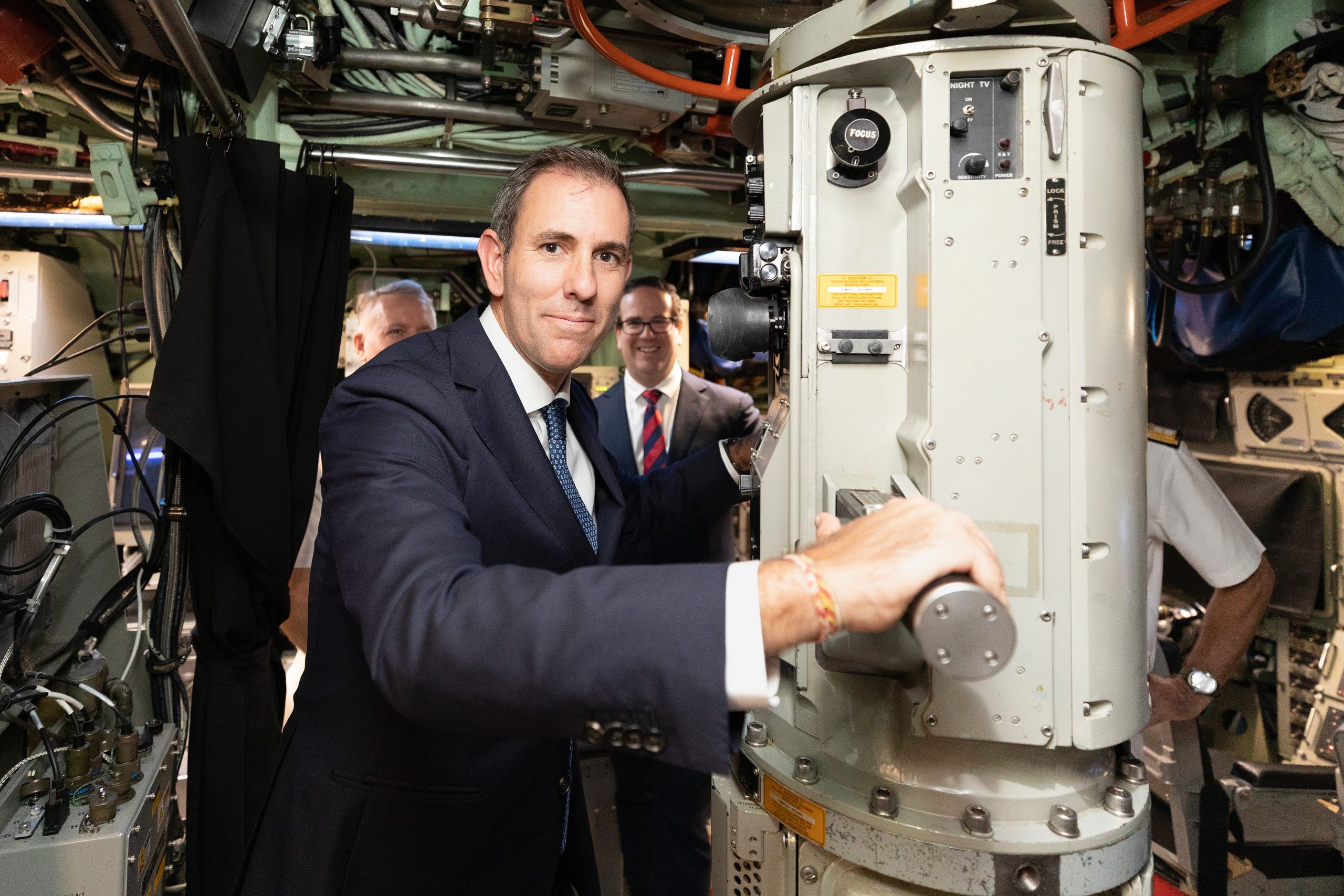Budget reveals pressures on Defence for savings to fund nuclear-powered submarines

All arms of Defence are under pressure to make savings to help fund the
nuclear-powered submarine (SSN) program while dealing with impact of inflation.
The total resourcing for Defence over the three years to 2025-26 of $172 billion, provided under yesterday’s budget, is only 2.5% ahead of the $168 billion budgeted by the previous government over the same period before last year’s election.
Inflation has soared since the last budget, hitting 7% in the year to March this year. The budget anticipates that by June, the annual pace will be trimmed to 6%, and it assumes that the Reserve Bank will then rapidly regain control over prices, bringing inflation down to 3.25% over 2023-4 and 2.75% in the following year.
Those forecasts leave total defence resourcing falling in real terms relative to the planned outlays a year ago, despite absorbing the first of the new commitments under the AUKUS partnership.
The acceleration of inflation came as a big surprise to the Reserve Bank and there is every likelihood that it will prove more difficult to bring under control than anticipated in the budget forecasts. This would bring a bigger fall in the real resourcing of Defence.
This analysis of Defence resourcing over the next three years, drawn from the Defence department
portfolio budget statements, provides a different impression to the main budget papers, which state that defence spending will rise 14% in nominal terms and 5.6% in real terms over 2023-24 to 2026-27.
Spending is rising faster than inflation in each year, broadly following the profile set out in the
2020 Defence Strategic Update, but the two big changes over the past year—incorporating the switch from the French conventionally-powered submarine to the AUKUS SSNs, and the unexpected surge in inflation—are squeezing real spending relative to the budget planning ahead of last year’s election.
When announcing the plan for the nuclear submarines in March, defence minister Richard Marles foreshadowed that the cost over the next 10 years would be $9 billion, of which about $6 billion would come from the cancellation of the French submarines, while $3 billion would be absorbed elsewhere in the Defence budget.
The government has also announced an ‘Advanced Strategic Capabilities Accelerator’ program within the Defence Department to lift its capacity to deploy new technologies. That will cost $3.4 billion over 10 years. This is also to be absorbed elsewhere in the budget. The portfolio budget statements show the first signs of the pressures generated by these commitments.
AUKUS is a long-term program and the budget forward estimate period, out to 2026-27, only contains the very beginning of spending on the submarines. However, the Defence Department’s portfolio budget statement shows that initial commitment is expected to reach $5.6 billion over the next four years. The statement shows an initial $515 million will be spent in 2023-24, which will include the establishment of the Australian Submarine Agency to manage the project.
The portfolio statements show a big payment of $3.7 billion on submarines in 2025-26, however they say the final allocation of spending will be decided ahead before the end of June.
Capital spending on new capabilities is taking a hit elsewhere. The downsizing of the Army’s planned purchases of infantry fighting vehicles will have an impact over the budget period, with capital outlays in 2024-25 and 2025-26 falling 7.6% from last year’s estimate to $8.5 billion. Capital spending in the Air Force is down 13.1% to $6.9 billion in the same period.
The Navy is also taking a hit on capital outlays. Defence has split out the naval shipbuilding and sustainment program from general acquisition of naval capabilities while the cancellation of the French program also makes direct comparison with last year’s portfolio budget statements difficult. However, Navy capital spending, excluding the shipbuilding and the nuclear submarine program show a 35% or $5.3 billion fall out to 2025-26. The naval shipbuilding program is only $891 million over that period.
The Defence portfolio statements shows that overall, the acquisition of new capabilities out to 2025-26 will be 1.9% lower than was anticipated in the final budget of the Morrison government. Sustainment of capabilities over that period will be 1.7% higher, while operational spending will be 2.4% higher. Elevated inflation means that all three elements of defence spending will be lower in real terms than was anticipated a year ago.
The portfolio statement highlights the difficulty Defence has had in meeting its staffing targets with the total workforce of 75,464 people falling 3600 short of the goal set last year. The army has had the greatest problem, missing its target by 8.3%, reflecting a higher number of resignations. The Defence department public service met its recruitment target.
Defence has a goal of lifting its workforce to over 101,000 by 2040, and plans to add almost 10,000 over the forward estimate period. The budget included an announcement that it would pilot a $50,000 retention bonus to ADF personnel nearing the completion of their initial periods of service. The total cost of just under $400 million is to be financed from elsewhere in the Defence budget.
 Print This Post
Print This Post